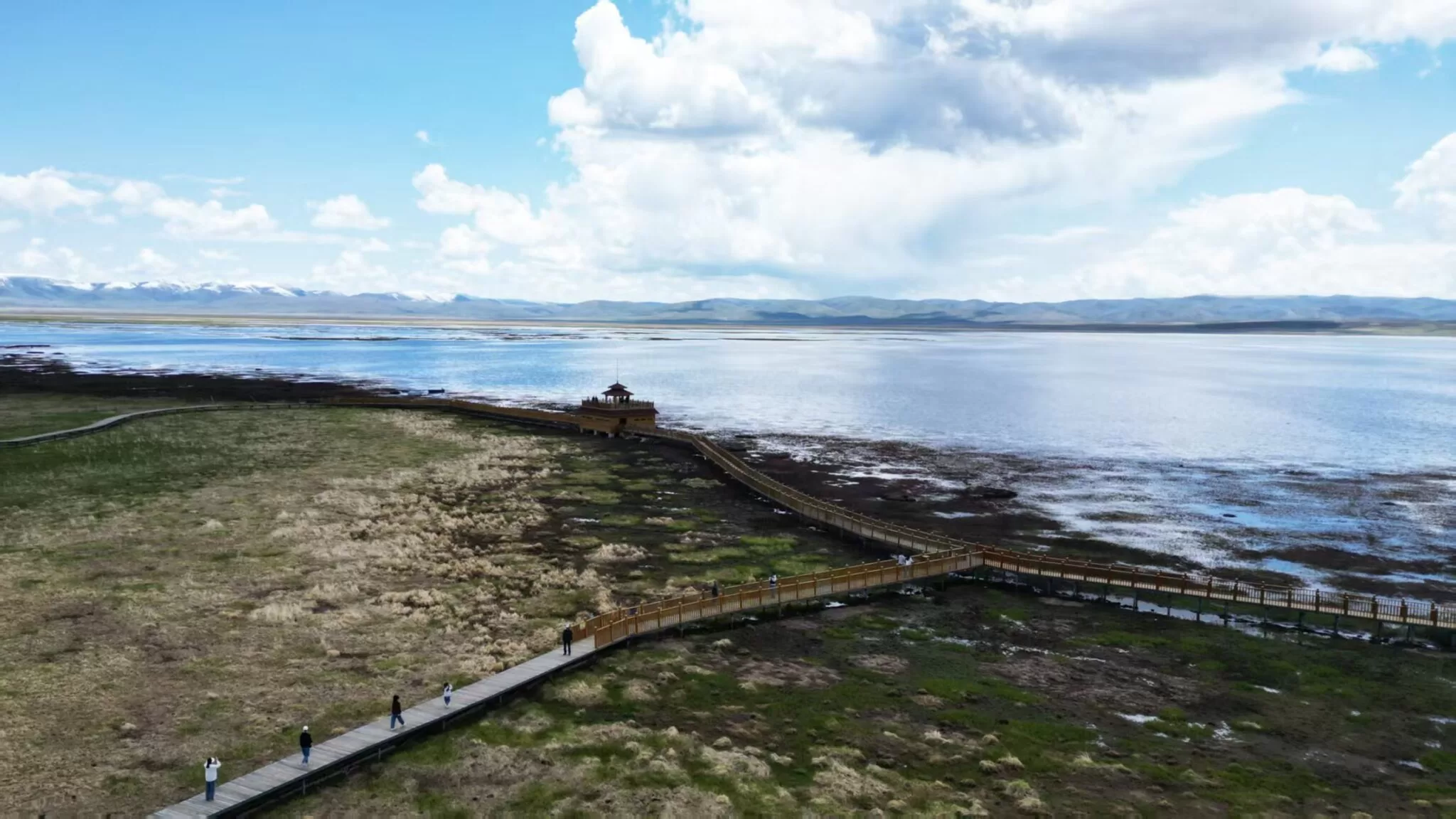
GANNAN, GANSU, June 14 (WSH) — On June 11, amidst the lush early-summer scenery of Gahai Lake—with rippling waters, thriving aquatic vegetation, and elegant black-necked cranes—journalists and influencers from the United States, Canada, Switzerland, South Korea, and other regions embarked on field trips to Gahai Zeca National Nature Reserve in Luqu County, Gannan Tibetan Autonomous Prefecture, located at the northeastern edge of the Qinghai–Tibet Plateau. Once a lake that dried up three times, Gahai has undergone over two decades of ecological restoration to transform into today’s vibrant “paradise for migratory birds.”
Although perched at 3,470 meters and born as a freshwater lake rather than a sea, Gahai is Gansu’s largest alpine lake and a key upper Yellow River watershed. The wetland is notable for encompassing a rare ecosystem nexus of mountains, water, forests, fields, lakes, and grasslands. It is also the only nature reserve in Gansu straddling both the Yellow and Yangtze River basins, earning acclaim as the “Kidney of the Plateau” and “Pearl of the Plateau.”
At the reserve’s management center, Wetland Division Head Fan Long shared the lake’s restoration story, noting that the lake had dried out three times due to overgrazing and soil erosion—once shrinking to just 500 hectares. However, since 2014, conservation projects—including wetland ecological compensation, planting native grasses, and rodent control—have increased the water area to about 2,700 hectares.
Fan highlighted new monitoring results: 40 artificial nesting platforms on the central bird island achieved a remarkable 99% breeding success rate. Biodiversity has rebounded, with six newly recorded species, including first- and second-class nationally protected wildlife. This year, over 30,000 migratory birds are expected to breed in the area. In 2024, two bar-headed geese and two black-necked cranes were banded for migration tracking research.
Local resident Wang Qimao, 67, recalled the once foul, parched shores and praised the ecological revival: “Now every migratory season, the spectacle is breathtaking.” Park Shin-hee, a Korean reporter, admired the pristine waters and sent photos to friends back home, calling it “a hidden paradise.” Wang Guanlun, editor-in-chief of Australia’s YiYiNet, commended the use of eco-trails, stating “it allows tourists to enjoy the scenery while minimizing disturbance to the birds—a model of scientific eco-management.”
Fan Long said the reserve will continue with conservation measures such as ecological water supplementation, hydrological connectivity, and habitat protection to enhance water quality and ecological functions.


